The Diversity of Brazilian Deers
Deer are ruminants, just like cows, goats, and antelopes, but they differ in that they have antlers instead of horns. Deer are one of the most diverse groups of mammals, with more than 60 species found in the Americas, Europe and Asia. In Brazil, eight species are currently recognized, making the country the most deer-rich in the world.
Of these, five species belong to the Mazama genus. However, as with many endemic animals, studies on cervids of this genus still need to be further developed. Even after several years of analysis, its taxonomy is uncertain, and it is not possible to accurately state the number of deer species or subspecies belonging to this genus.
Gray brocket
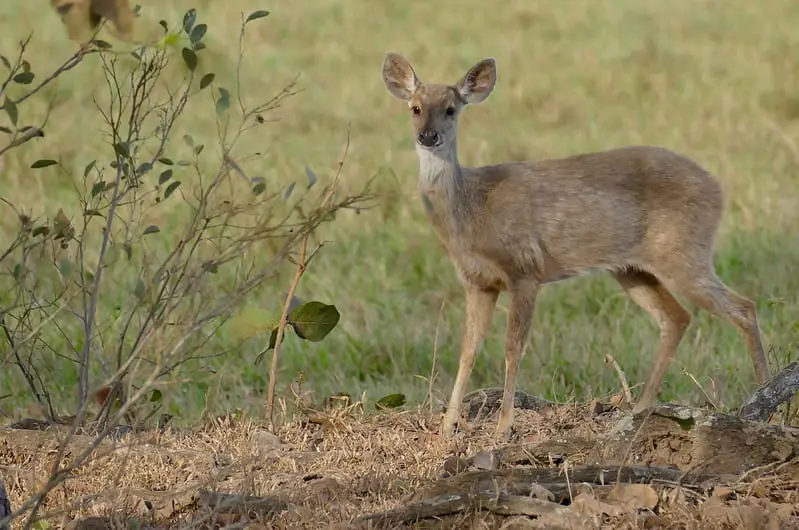
Scientific Name: Mazama gouazoubira
Also known as the brown brocket, it is found throughout Brazil, except in the Amazon region. It weighs about 18 kg (35 lbs.), and measures about 50 cm (20 in.) at the withers. Its coloration can vary from dark gray to reddish brown.
Most individuals have a white patch over the eyes - a unique feature of this species. The antlers are unbranched and measure 6 to 12 cm (2 to 5 in) in length and are most commonly seen between May and July.
Because of its great adaptability, the deer can live in areas modified by humans, such as sugar cane plantations, pine or eucalyptus plantations. Although adaptability is generally considered a good sign, it has caused some concern due to its high potential to become an invasive species, dominating the territory of other deer species already under threat.
Because it is a poorly understood species, conservation or control efforts are challenging. Although it is the most abundant deer in Brazil, it is threatened with extinction in Rio de Janeiro and Rio Grande do Sul.
Amazonian brown brocket
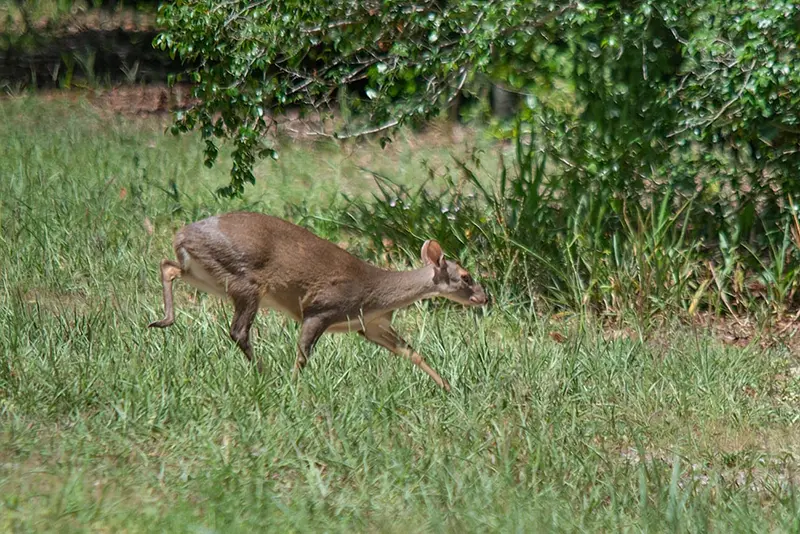
Scientific Name: Mazama nemorivaga
It is a small species, weighing about 15 kg (110 lbs) e 48 cm (18 in.). Its fur is gray, mixed with yellowish hairs, mainly on the sides of the body. It was known only in the Amazon rainforest, but in 2020 a study obtained evidence through camera traps, of two populations of Amazonian brown brocket living in the Atlantic Forest of Espírito Santo — more than a thousand kilometers from its supposed distribution limit.1
Only in 2000 was it recognized as a separate species from the gray brocket, which had been confused for many years. As a result, it is still poorly known, and further taxonomic and ecological research is needed, especially on its habitat and population. As a result, it is not yet possible to determine whether the species is threatened or not.
Red brocket
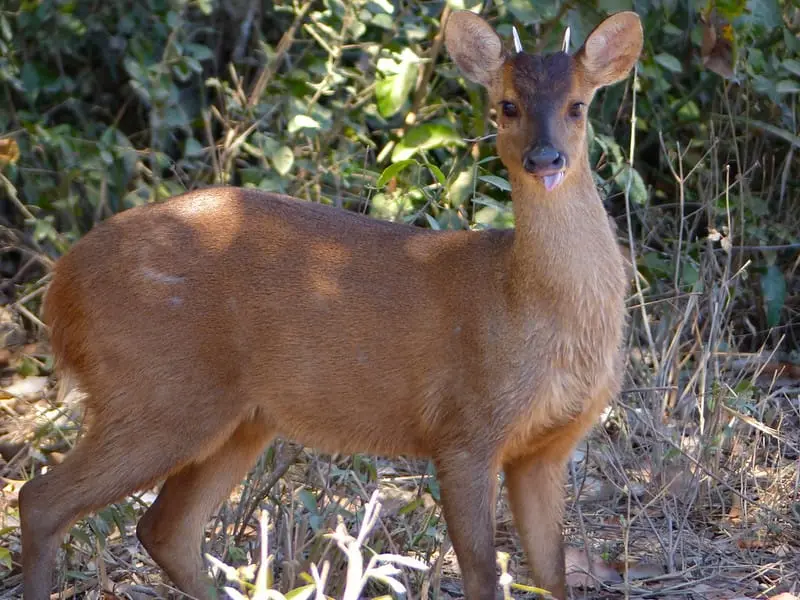
Scientific Name: Mazama americana
It is the largest species of the Mazama genus, weighing about 30 kg (66 lbs), but can weigh up to 65 kg (220 lbs). It is about 70 cm (24 inches) high at the withers. Its coat is reddish with white patches under the tail, inside the ears and on the limbs, the back of the neck is usually darker.
It has the largest distribution of any South American deer, but is rare in the Caatinga and parts of the South and Southeast, mainly due to habitat loss from urban and agricultural expansion. However, while individuals in the southeast are endangered, the Amazonian population has managed to thrive even under the influence of hunting, which is still common in the region.
Small red brocket
Scientific Name: Mazama bororo or Mazama jucunda
The small red brocket weighs about 24 kg and its height at the withers is 50 cm.
Due to its limited occurrence in the Atlantic Forest of São Paulo, Paraná and Santa Catarina, the small red brocket can be considered one of the most endangered deer species in the world. Currently, the species is considered “vunerable” by the UICN.2
Pygmy brocket
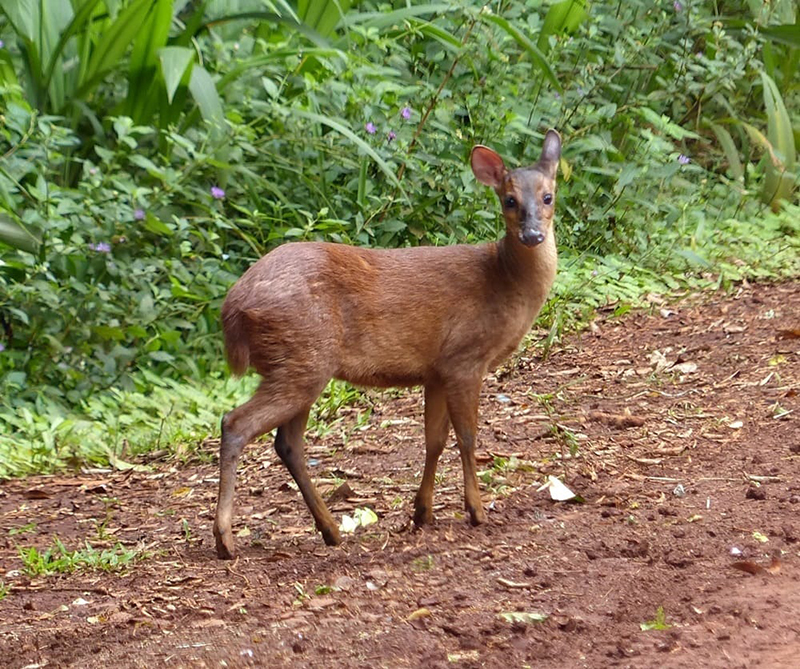
Scientific Name: Mazama nana
It is the smallest deer in Brazil, with a weight of only 15 kg and a height of 45 cm at the withers. Its legs, especially the front ones, are very short.
Like most of the Brazilian deer, the pygmy brocket is very little known, and the only information on the species is mainly limited to its geographical distribution. In Brazil, its presence can only be confirmed in some isolated regions of Paraná, Santa Catarina and Rio Grande do Sul.
It was listed as an endangered species in 2003, and with so little information about it, it is impossible to make a realistic assessment of the threats it faces. However, the main causes are probably habitat loss, poaching and dog-borne diseases.
Pampas deer
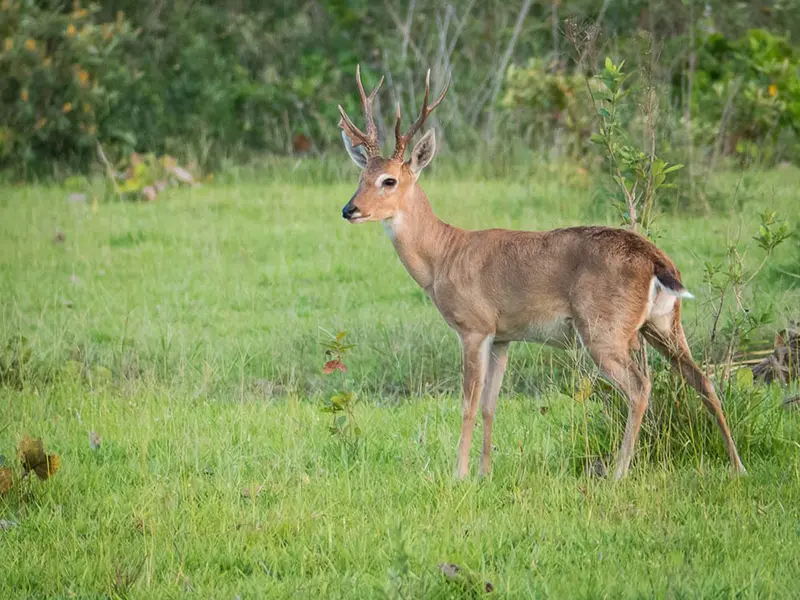
Scientific Name: Ozotoceros bezoarticus
It is the only species of Brazilian deer found exclusively in open areas. It is medium-sized, with a height of about 70 cm (27.5 in) up to the withers and weighing 30 to 40 kg (22 to 25 lbs), which is larger than the cervids of the Mazama genus. Coloration varies geographically and characterizes the five subspecies, two of which are found in Brazil. Their antlers are well developed, up to 30 cm (11 in) long, and generally have three points.
They are mostly diurnal animals and not very sociable, living in small groups, hardly exceeding 5 or 6 individuals.
Originally, it was the dominant species throughout Brazil, but with the introduction of domestic cattle, eucalyptus, and pine plantations and poaching, its population was drastically affected, with estimates that up to 98% of its original distribution was reduced. Currently, isolated populations are found throughout the country, being listed by most states as critically endangered, and only in the Pantanal can it be considered abundant.
Marsh deer
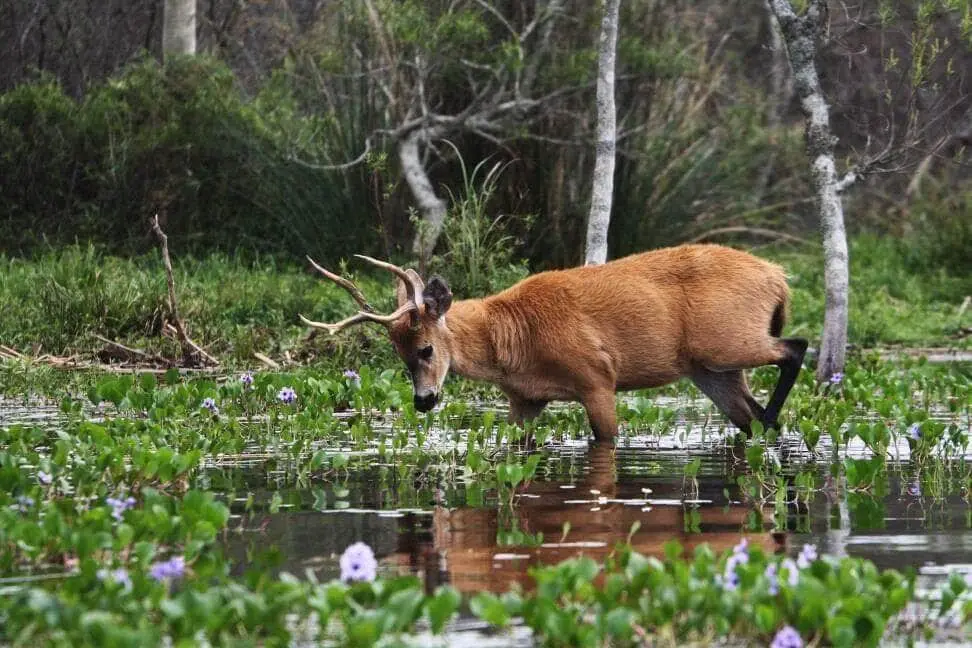
Scientific Name: Blastocerus dichotomus
It is the largest deer species in Latin America and one of the largest mammals in Brazil. They weigh between 100 and 130 kg (220 and 286 lb) and are about 130 cm (51 in) high at the withers. Its reddish coloration, with black legs, tail, eye area, and snout, makes the swamp deer easily identifiable.
The antlers are well branched, up to 60 cm (23 inches) long, and can have up to twelve antlers in total, depending on age and quality of diet. The marsh deer is the only one in South America that has an interdigital membrane between its hooves, which helps it move in swampy environments.
It originally inhabited all five biomes in the country, but the species has been disappearing very rapidly. States that originally had large populations now have only isolated groups, leading to possible local extinctions in the near future. It is listed as endangered in several states, mainly due to poaching, habitat loss and disease. Only in the Pantanal is it more commonly seen.
White-tailed deer
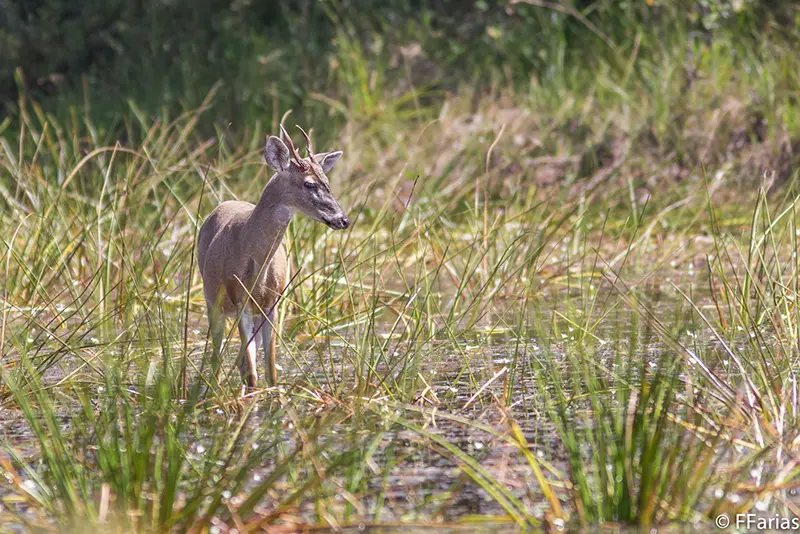
Scientific Name: Odocoileus virginianus
Also known as the Virginia deer, it is the only deer that is present in North, Central and South America, having the largest distribution in the continent. It has about forty subspecies, but this number is questionable.
In Brazil, only the subspecies O. v. cariacou occurs, and it is smaller than the American species - weighing between 30 and 50 kg (66 and 110 lbs) and about 26.5 inches to the withers. Its coloring is generally grayish-brown on the back and lighter on the belly, and may have white patches around the eyes.
The white-tailed deer is the most studied cervid in the world, but most of the information is related to the North American subspecies. Thus, the situation becomes inverted in Brazil, making it the least studied species in the country, not even its geographic distribution is properly known.
Very few records report its occurrence north of the Amazon River, in part of the extreme north of Brazil, in Amapá and Roraima, and possibly in part of the state of Acre. Although it was previously considered as threatened with extinction, it is currently found as Data Deficient (DD) due to the little knowledge about the species in the country.
Brazil is one of the countries with the greatest biological diversity in the world, which ends up making knowledge about our fauna and flora very limited. If we do not even know all the species of large mammals and birds, this gap is even more serious when it comes to invertebrates or microorganisms.
Considering the size of the country, there are places where little or no biological study has been done. Moreover, our lack of understanding is even bigger when it comes to the geographical distribution of each species, since it is difficult to obtain properly complete maps of most of our animals.
The functioning of ecosystems and all the well-being that they bring to humans depends mainly on the vast diversity of insects, algae, microorganisms and animals. Therefore, it is necessary to invest in the conservation of biodiversity, not only by preserving the environment, but also by studying the diversity and ecological organization of Brazil.
Read more:
The surprising evolutionary history of South American deer
Plano de ação nacional para a conservação dos cervídeos ameaçados de extinção
Avaliação do risco de extinção do veado-catingueiro - Mazama gouazoubira
Avaliação do Risco de Extinção do Veado-roxo
Mudança, incerteza e desconhecimento: a biodiversidade brasileira no século XXI
